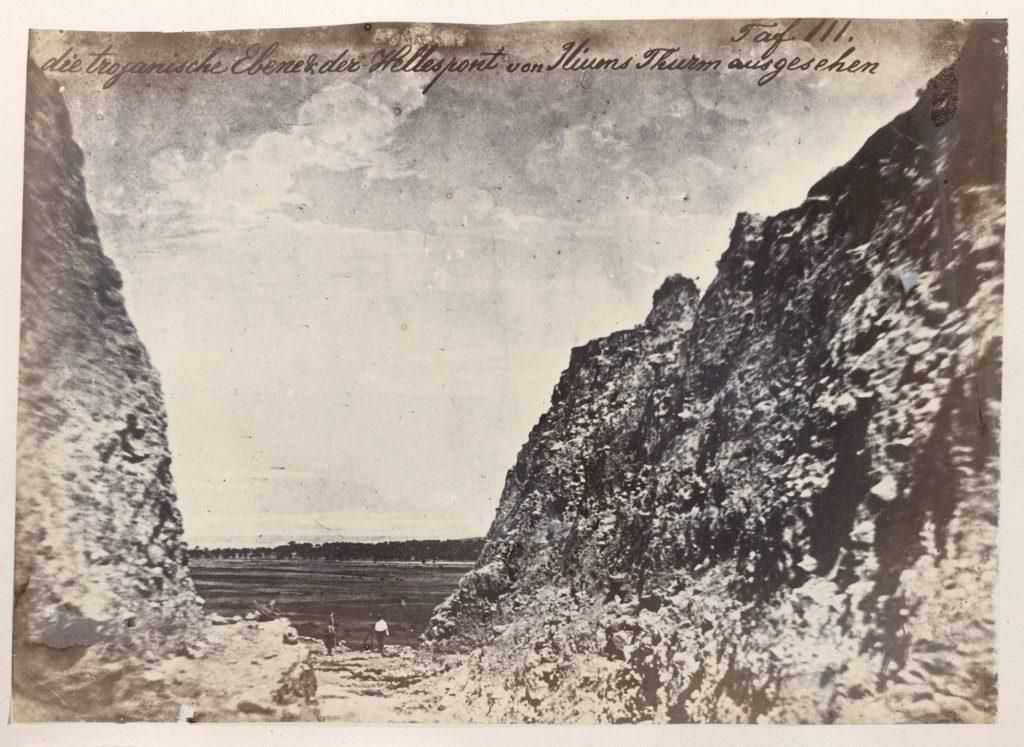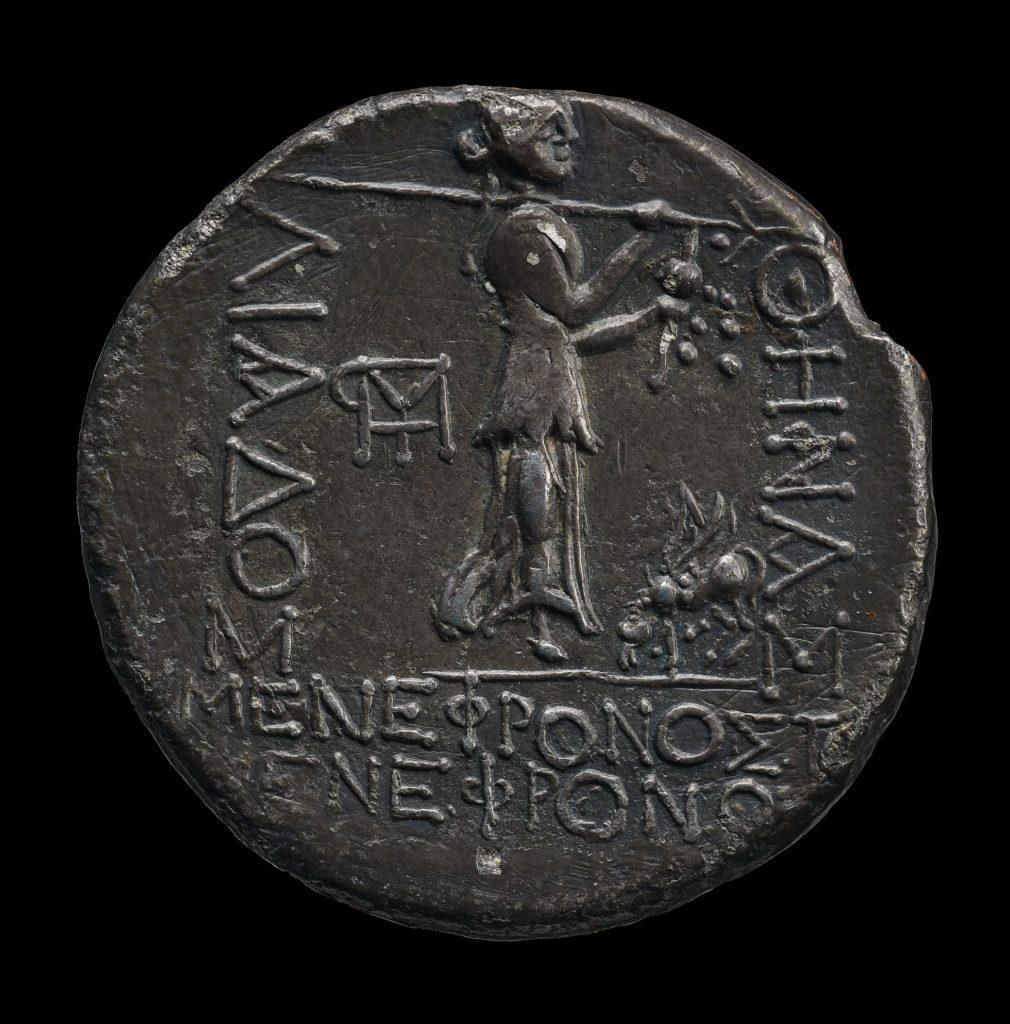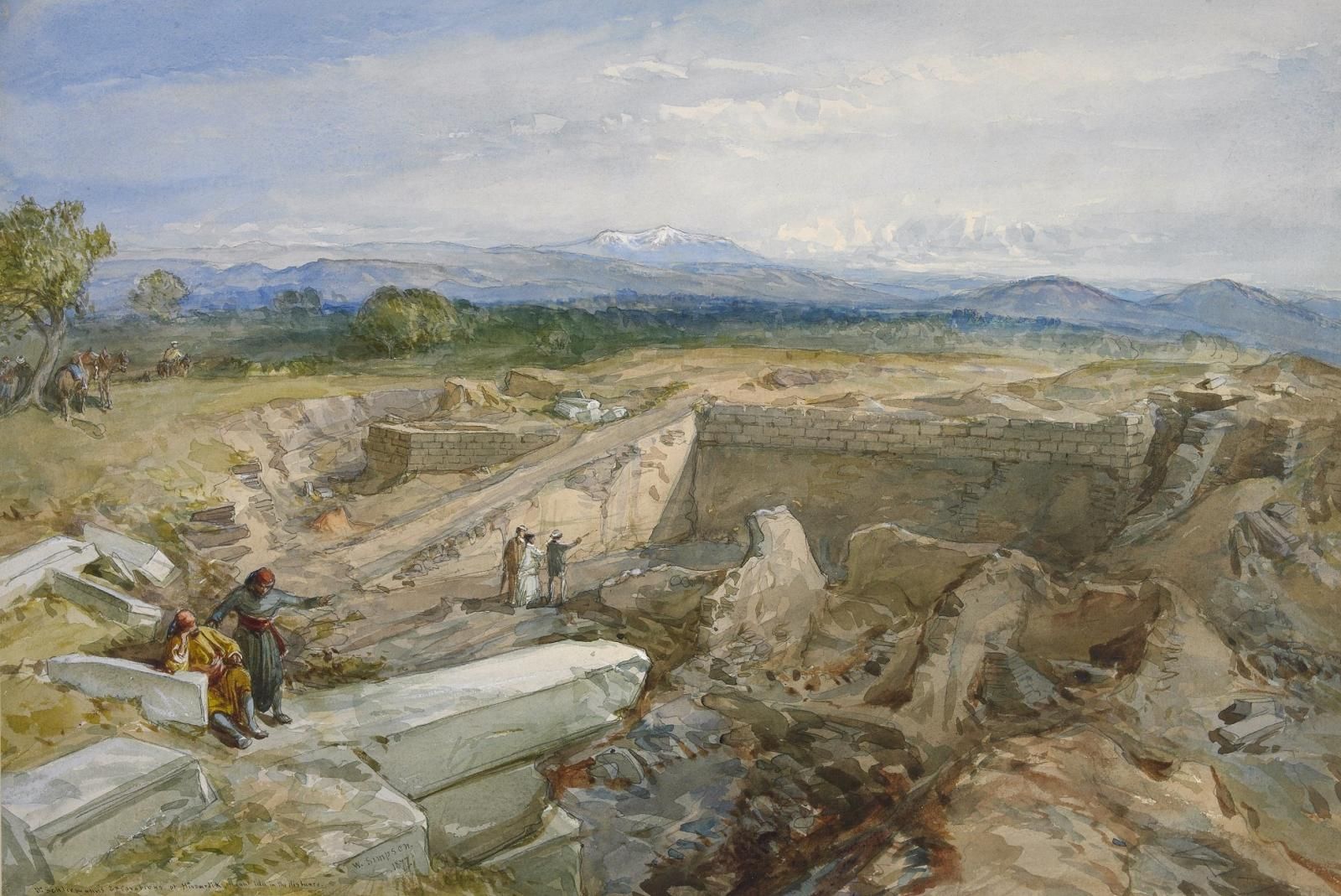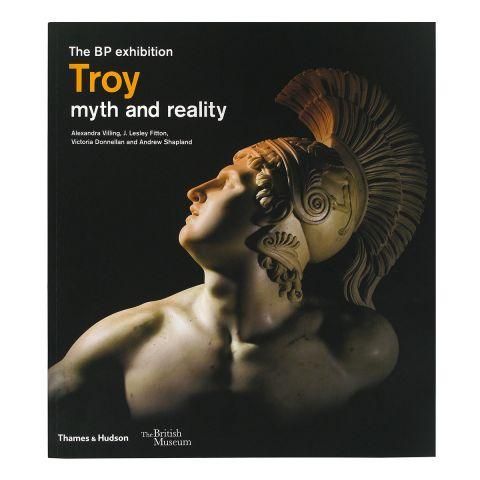The myth of the Trojan War has captivated people for thousands of years and has led pilgrims, explorers and archaeologists to search for the location where the famed conflict took place. But did the city really exist?
In anticipation of our major autumn exhibition, curators Lesley Fitton and Alexandra Villing explore the reality behind the myth.
The search for the lost city of Troy
3,000 years ago, the ancient Greek poet Homer told the story of the ill-fated city of Troy and the great Trojan War in his powerful epic, the Iliad. This mythical tale of love and war has captured imaginations ever since. You can read more about the story in our blog.
While some have argued that the myth of Troy was just that – a myth – the allure of the story has led many to search for the site that, according to Homer's poem, was one of the most important settlements of its time.
Since antiquity, Troy was believed to be located in an area called the 'Troad' in the northwest corner of modern-day Turkey. For centuries, pilgrims and travellers made the journey to the Troad to stand on the ground where they believed heroes once walked. In the 19th century, a Scotsman and an Englishman, Charles Maclaren and Frank Calvert, were the first to link a hill containing ancient remains with the site of ancient Troy. But the real breakthrough came in 1870, when the German businessman and self-taught archaeologist Heinrich Schliemann travelled to Anatolia with the purpose of uncovering the city and proving the Iliad was based on fact. Since then, the site that Schliemann claimed was 'Troy' has been the subject of extensive excavation and study. Although the evidence can't prove that the Trojan War really happened, experts now agree that the settlement Schliemann excavated was the famous city…
The city of Troy
The site of Troy, in the northwest corner of modern-day Turkey, was first settled in the Early Bronze Age, from around 3000 BC. Over the four thousand years of its existence, countless generations have lived at Troy. Although they experienced periods of prosperity, life was not always easy for the Trojans – houses and fortifications fell to fire, earthquakes or battles and were built anew. The city sometimes grew, sometimes contracted as its people's fortunes changed.
It is this record of a people and their city that is preserved in archaeology. Each layer of occupation, one on top of the other, represents a phase in the city's history, which archaeologists over the last 150 years have been exploring. These layers have been labelled Troy I to IX, with Troy I being the earliest settlement and Troy IX the most recent. Much remains to be discovered, but we now know enough today to get a good sense of the city's development over time.
Troy begins
The original village of Troy (Troy I) was small, but it flourished and grew. By about 2550–2300 BC (Troy II) it had strong walls encircling a citadel that was still relatively small, but remarkably prosperous.
Troy was situated at the entrance to the Dardanelles strait, and in ancient times lay much nearer to the sea than it does today – the coastline has changed as river deltas have silted up. Its position was key to its prosperity, as the city could trade by sea as well as by land. It may also be that ancient ships, waiting for the wind and currents they needed to pass through the straits, provided a captive market for Trojan goods and services.
The city flourishes
Troy went from strength to strength. By the Late Bronze Age, about 1750–1180 BC (Troy VI and VIIa), a larger citadel was enclosed behind impressive sloping walls, parts of which can still be seen at the site today, and there is evidence of a large settlement in the lower town.
Trojan wealth was also built on the rich agricultural land in the surrounding area. In the Iliad, the Trojan prince Hector is 'tamer of horses' and horse-breeding may well have played a part in Troy's prosperity. Horse bones have been found there in quantity, as well as bones showing the rearing and domestication of other animals. Sheep farming must have been particularly important, as there is evidence for extensive textile production at Troy and these textiles may well have been exported. It is only over the past few decades that modern archaeology, including the study of ancient plant and animal remains, has transformed our understanding of all these aspects of life at ancient Troy.
Troy and its neighbours – evidence for the Trojan war?
During the late Bronze Age (1750–1180 BC), the city was by far the most important settlement in the area but it was only a small player on the world stage. Troy appears in records from the Hittites (a civilisation which flourished in what is modern-day Turkey) as 'Wilusa', a name related to the Greek 'Ilios'/'Ilion', Homer's other name for Troy. Towards the end of the Late Bronze Age, Wilusa was a small vassal state (a state without independence) of the mighty Hittite Empire of Anatolia. The capital of the Hittite Empire, Hattusa, was far away to the east near modern-day Boğazkale in Turkey. From Hattusa, Troy must have seemed a distant backwater. Yet its wealth and dominant position undoubtedly made it a prize. Did the Greeks (who came from 'Ahhiyawa' according to the Hittites, a name related to the 'Achaea' of Homer) look enviously at its prosperity?
Hittite tablets mention the Hittite empire fighting with the people of 'Ahhiyawa' over Wilusa – could this have been the Trojan War? There is even mention of a ruler there called 'Alaksandu' or Alexandros, which is another name for the Trojan prince Paris in Homer's poem. This is all such tantalising evidence. Although it falls far short of proof, it builds up the picture of a feasible background for a Trojan War, in the interconnected but combative Late Bronze Age world.
Troy and Ilion
Troy fell into ruin at the end of the Bronze Age, around 1180 BC, as did all the centres of power of the Mediterranean world, for reasons that are not completely understood. The site was never completely abandoned, and its ruins must have remained visible for some centuries, probably up to the time of Homer, if the poet lived in the late 8th or early 7th centuries BC as thought. It was not long after this that Troy, known as 'Ilion', became a place of pilgrimage because of its heroic associations. The name Ilion is used by Homer interchangeably with Troy, and it is possible the inhabitants had always called their city something like Ilion, right back to its days as Wilusa.
Greek Ilion was a small town, but enriched by what one might call its 'tourist trade' of visitors seeking to pay their respects to the heroes of the past. Greek leaders and Roman emperors endowed it with wealth and privileges, including fine civic buildings. The Troy of the Greek and Roman periods was not otherwise a particularly important place, but it nonetheless flourished until the end of the ancient world (in the 6th century AD), and perhaps even beyond – there is some evidence for Byzantine settlement on the site as late as the 13th century AD. Troy can therefore be said to have had a lifespan of more than 4,000 years.
Troy lost
It seems completely astonishing that the site of Troy could later have been lost, but it was. Over time, its remains crumbled away to become part of a low hill in a flat landscape that was only sparsely populated. The hill did not seem to be anything special. More noticeable were the 'tumuli', or mounds, dotted around the Trojan plain. These were in fact mostly not Bronze Age but created at different dates in the Greek and Roman periods, mostly for burials. These mounds were very visible in the landscape, and so gave early visitors looking for the heroes the sense that they had found their graves. But the city of Troy, or Ilion, had been lost from view.
The search for Troy
The search for Troy became a major preoccupation for travellers, topographers, writers and scholars in the 18th and early 19th centuries when ancient Greece and its myths captivated public imagination in Europe. But it was not a simple matter and became a subject of heated debate. The division lay between 'realist' thinkers, who believed the story of Troy must be based on some historical truth, and opponents who claimed it was simply dreamed up in Homer's poetic imagination and would never be found.
The Troad was mapped and explored and the prevalent theory of the 'realists' was that a hill called 'Pinarbaşı' had been the site of Troy, but they couldn't find any evidence. In what should have been a breakthrough, a traveller named Edward Clarke visited a different hill, named 'Hissarlik' in 1801 and identified it as the site of Ilion. He based this on the evidence of coins and inscriptions he found there. However only later in the 19th century would it dawn that Hissarlik was the site not just of Ilion, but also of legendary Troy, which was underneath the Classical remains.
Troy found
Troy found
Frank Calvert lived in the Troad and owned land next to the mound of Hissarlik. An amateur but skilled archaeologist, he was convinced that there would be a good place to dig. So when Schliemann visited in 1868, with Homer in one hand and a spade in the other, determined to make his name in archaeology, Calvert found him easy to persuade. Calvert helped Schliemann, but it would be Schliemann's name that became world famous, as the pioneer of archaeology who discovered and revealed the site of ancient Troy.
Huge publicity surrounded Schliemann's finds. He announced to the world that in what is now called Troy II he had found the city of mythical King Priam and the Troy of the Trojan War. It was here that he discovered silver and gold vessels and jewellery, which he named 'Priam's treasure' and which he believed included 'the jewels of Helen'. His interpretation that the finds were evidence of the Trojan War was questioned at the time and, perhaps sadly for romantics everywhere, it is no longer accepted.
Later archaeological work at both Troy and on the Greek mainland, particularly at the site of Mycenae (one of the most important settlements of Bronze Age Greece), makes it clear that any feasible background for the story of the war must have been at least a thousand years later than the Troy that Schliemann claimed as 'Priam's Troy.' Only then was Mycenaean Greece in contact with Troy, and powerful enough for the story to make sense. But of course, Homer was a poet and not a historian. It remains immensely difficult to link the Iliad specifically to the archaeology of Troy.
Schliemann's excavations, between 1870 and 1890, marked the beginning of intensive archaeological exploration at Troy, by various international teams, that continues today, with current research led by Turkish archaeologists. Understanding of the site, its development over time and its place in the ancient world continues to grow. From an archaeological perspective, there is a rich history to be uncovered that stands quite apart from the myth of the Trojan War and is important in its own right. Yet the myth and the site remain inextricably linked. Few visitors can look out from the walls of 'windy Troy' across the Trojan plain without thinking of the massed Greek armies waiting to attack, or the women of Troy watching helplessly as battle rages below.
The BP exhibition Troy: myth and reality ran from 21 November 2019 to 8 March 2020.
Buy the book accompanying the exhibition.
Supported by BP
















